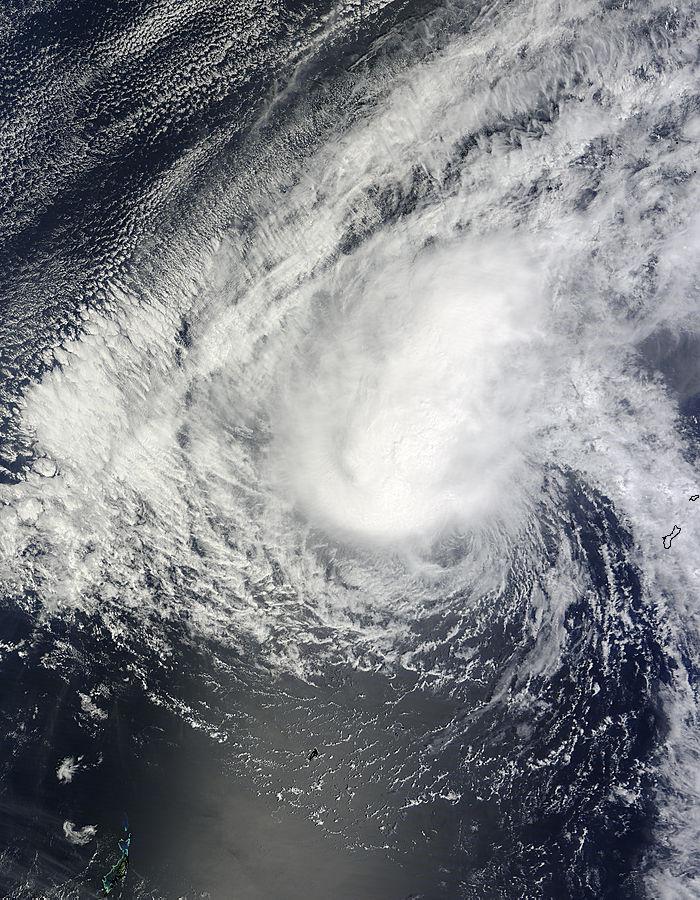Tropical Cyclone Bavi moving through Philippine Sea

On March 16 at 01:35 UTC, the MODIS instrument aboard Aqua provided a visible image of the Tropical Cyclone avi moving through the Philippine Sea. Credit: NASA Goddard MODIS Rapid Response Team
On March 16 at 01:35 UTC, the Moderate Resolution Imaging Spectroradiometer (MODIS) instrument aboard Aqua provided a visible image of the storm. The storm appeared somewhat elongated with strong thunderstorms stretching from the center, northwest of the center as a result of moderate southeasterly vertical wind shear.
An infrared image from the Atmospheric Infrared Sounder or AIRS instrument that also flies aboard Aqua revealed the coldest cloud top temperatures of powerful thunderstorms were as cold as -63F/-52C, indicating they have the potential for dropping heavy rainfall. Those thunderstorms circled the center and northwestern quadrant of the storm.
At 1500 UTC (11 a.m. EDT), Bavi's maximum sustained winds were near 40 knots (46 mph/74 kph). It was centered near 14.2 north latitude and 138.4 east longitude, about 254 nautical miles north of Ulithi. Ulithi is an atoll located in the Caroline Islands.
Bavi was moving to the west-northwestward at 8 knots (9.2 mph/14.8 kph).
Bavi is forecast to continue on a westerly trek through the Philippine Sea, but is expected to weaken to a depression as it nears the northern Philippines. The Joint Typhoon Warning Center current forecast track takes the storm near eastern Luzon sometime on March 20.
Media Contact
All latest news from the category: Earth Sciences
Earth Sciences (also referred to as Geosciences), which deals with basic issues surrounding our planet, plays a vital role in the area of energy and raw materials supply.
Earth Sciences comprises subjects such as geology, geography, geological informatics, paleontology, mineralogy, petrography, crystallography, geophysics, geodesy, glaciology, cartography, photogrammetry, meteorology and seismology, early-warning systems, earthquake research and polar research.
Newest articles

Compact LCOS Microdisplay with Fast CMOS Backplane
…for High-Speed Light Modulation. Researchers from the Fraunhofer Institute for Photonic Microsystems IPMS, in collaboration with HOLOEYE Photonics AG, have developed a compact LCOS microdisplay with high refresh rates that…

New perspectives for material detection
CRC MARIE enters third funding period: A major success for terahertz research: Scientists at the University of Duisburg-Essen and the Ruhr University Bochum have been researching mobile material detection since…

CD Laboratory at TU Graz Researches New Semiconductor Materials
Using energy- and resource-saving methods, a research team at the Institute of Inorganic Chemistry at TU Graz aims to produce high-quality doped silicon layers for the electronics and solar industries….



